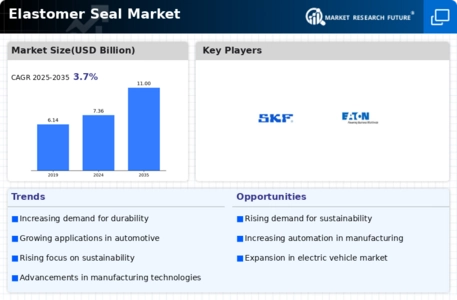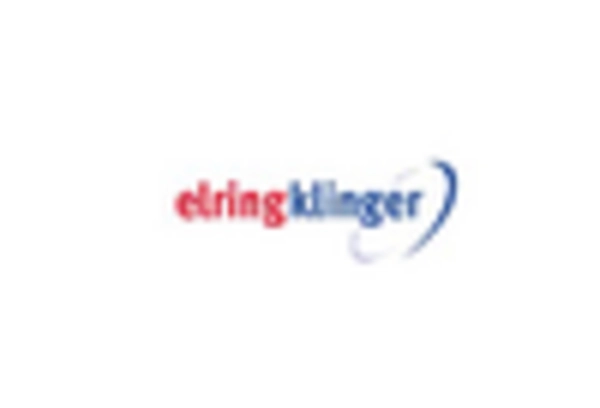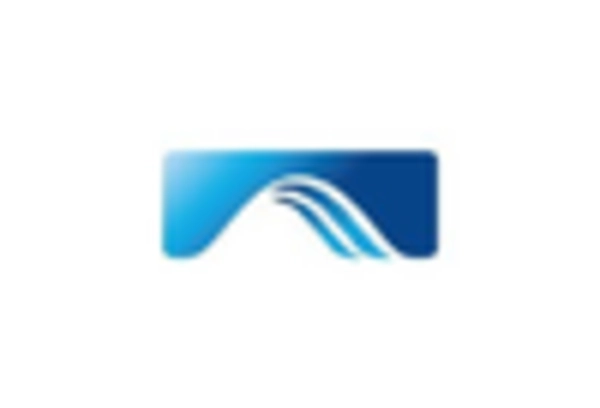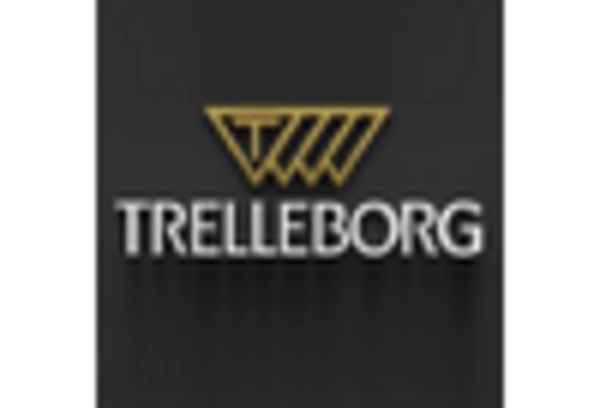Increasing Regulatory Standards
The elastomer seal market is also being shaped by the increasing regulatory standards across various sectors, including automotive, aerospace, and pharmaceuticals. Stricter regulations regarding emissions, safety, and product quality are compelling manufacturers to adopt higher standards for sealing solutions. As a result, there is a growing emphasis on the use of elastomer seals that meet these stringent requirements. The elastomer seal market is likely to see a surge in demand as companies strive to comply with regulations while maintaining operational efficiency. This trend may lead to innovations in material science and design, as manufacturers seek to develop seals that not only meet regulatory standards but also enhance performance and durability. Consequently, the elastomer seal market is positioned to thrive in an environment where compliance and quality are increasingly prioritized.
Expansion in Oil and Gas Industry
The oil and gas industry is a critical driver for the elastomer seal market, as these seals are vital for ensuring the integrity and safety of various operations. With the ongoing exploration and production activities, there is a heightened demand for reliable sealing solutions that can withstand extreme temperatures and pressures. The elastomer seal market is expected to grow in tandem with the oil and gas sector, which has been investing heavily in technology to enhance extraction processes. Reports indicate that the demand for elastomer seals in this sector could increase by approximately 6% over the next few years, as companies seek to minimize leaks and improve operational efficiency. This growth is indicative of the broader trend towards adopting advanced materials that can withstand harsh environments, thereby reinforcing the elastomer seal market's position as a key player in the oil and gas supply chain.
Growth in Renewable Energy Sector
The renewable energy sector is emerging as a significant driver for the elastomer seal market, particularly in applications related to wind and solar energy. As the world increasingly shifts towards sustainable energy sources, the demand for reliable sealing solutions in these technologies is on the rise. Elastomer seals play a crucial role in ensuring the efficiency and longevity of components used in wind turbines and solar panels. The elastomer seal market is projected to benefit from this trend, with estimates suggesting a growth rate of around 7% in the coming years. This growth is indicative of the broader transition towards cleaner energy solutions, where the reliability of sealing technologies is paramount to the overall performance of renewable energy systems.
Rising Demand in Automotive Sector
The automotive sector is experiencing a notable increase in demand for elastomer seals, driven by the need for enhanced performance and durability in vehicles. As manufacturers strive to improve fuel efficiency and reduce emissions, the use of elastomer seals has become essential in various applications, including engines, transmissions, and fuel systems. The elastomer seal market is projected to witness a growth rate of approximately 5% annually, reflecting the automotive industry's shift towards advanced sealing solutions. This trend is further supported by the growing consumer preference for electric and hybrid vehicles, which require specialized sealing technologies to ensure optimal performance. Consequently, the elastomer seal market is poised to benefit significantly from the automotive sector's evolution, as manufacturers increasingly prioritize reliability and efficiency in their designs.
Technological Innovations in Manufacturing
Technological advancements in manufacturing processes are significantly influencing the elastomer seal market. Innovations such as 3D printing and advanced molding techniques are enabling manufacturers to produce seals with enhanced precision and performance characteristics. These technologies allow for the creation of complex geometries and customized solutions that meet specific application requirements. As a result, the elastomer seal market is witnessing a shift towards more efficient production methods, which can reduce lead times and costs. Furthermore, the integration of smart technologies into manufacturing processes is likely to enhance quality control and product consistency. This trend suggests that the elastomer seal market will continue to evolve, driven by the need for high-performance sealing solutions that cater to diverse industrial applications.


















Leave a Comment